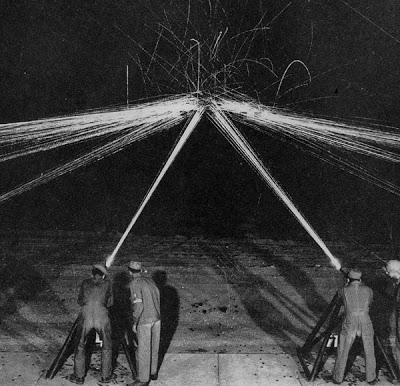[Tuttle rejoined the hastily reconstituted 158th Regimental Combat Team as it prepared for its first action after landing south of Kanoya.]
I had no trouble getting a ride back down the mountain, as a parade of jeeps and weasels was hauling ammo a few rounds at a time up to the artillery, which they would need to paint the terrain ahead of the 158th. It was a bit of a trick to find a way over to the 158th, but I didn’t want to miss seeing them in action. A signed and inscribed copy of the division’s daily newsletter, and a signed note explaining my driver’s absence, got me a young private willing to ‘borrow’ an MP jeep for the hour it would take him to shuttle me over and get back. Private Joe Pezzotti, of Queens, New York, was no stranger to camp pranks, or to getting in trouble, from what he told me on the ride over.
The coast road was well secured by then; we moved quickly. We had no difficulty finding the 158th HQ, as it was at the geometric center of a sprawling patch of chaos. Men were generally well ordered, sorting themselves out by unit, but equipment was coming ashore for the first time. It had to be assigned on the fly to the largely improvised combat units. Some headquarters staff were reduced to traffic cops, pointing trucks and tanks different directions while flipping hurriedly through stacks of paper on heavy clipboards.
I directed myself down dusty streets, freshly cleared by American engineers and found the new-old second company of the new-old second battalion. Sure enough, a couple of the NCOs I’d met on Tanega-shima were still with the unit, working to form up their groups of men into functioning units. A third of them were brand new, some only recent boot camp graduates. Any of them who had been through any further skill training were practically respected vets.
Sergeant Henry Brockell had three teams of his platoon doing last minute runs through on the two machine guns they actually had. His lead gunners were veterans now, and their assistants had been trained, but the runners had never so much as picked up a box of ammo let alone fired a burst.
The regiment was due to move out at eleven. At one thirty the first tanks finally moved out, leaving four hours of good daylight to use on the short December day. Smoke and dust were kicked up in lines ahead of the columns as artillery worked to pave the way.

